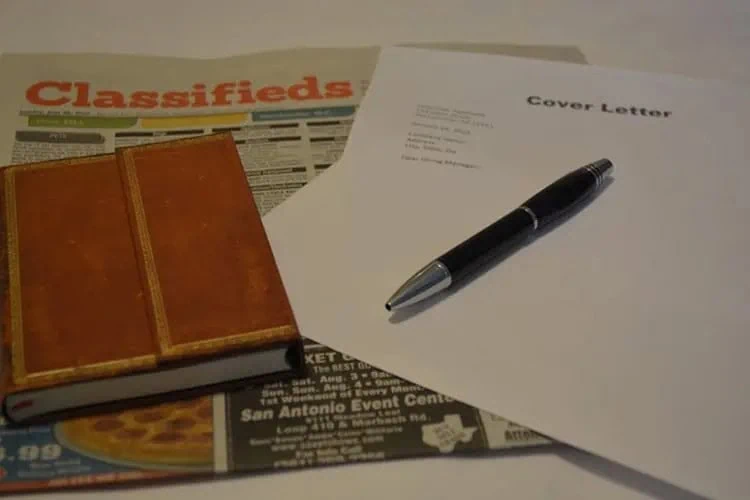Are you stepping into the job market or aiming to pivot into a new role? Crafting a compelling cover letter can be the key to unlocking doors of opportunity. But with the evolving job application landscape, understanding how to adapt your cover letter format is more critical than ever—whether through paper or electronic submissions. This guide is tailored for entry-level job seekers like you, offering step-by-step advice on refining your cover letter to stand out in today’s competitive job environment.
From mastering the art of presentation to personalizing your message and choosing the right attachments, we’ve covered everything you need to know. We aim to empower you with the knowledge and confidence to tailor your cover letter, making a memorable first impression with potential employers. So, join us as we dive into the essentials of cover letter format adaptation, setting the stage for your job application success.
Understanding Cover Letter Format Adaptation
In today’s job market, adapting your cover letter format is critical. Whether you’re writing a paper cover letter or an electronic one, the goal is to make a solid first impression. Here’s how:
Paper vs. Electronic
- Format: Paper cover letters follow a traditional business format. Electronic ones are less formal.
- Delivery: Paper letters are hand-delivered or mailed, while electronic ones are emailed or submitted online.
However, both types need to catch the hiring manager’s eye. Always address the letter to a specific person. If unsure, research online or call the company. Aim for a tone that matches the company’s culture. An excellent way to learn about this is through the company’s LinkedIn page.
Tips for Both Formats
- Be concise. Aim for a one-page limit.
- Mention your critical skills early. Highlight how they fit the role.
- Wrap up with a call-to-action, like requesting an interview.
Every cover letter you write should be unique. Yet, following these basic rules for cover letter format adaptation can put you ahead. Explore more on adapting your approach to today’s job market with articles on bilingualism benefits in the U.S. and navigating remote work environments.
Mastering Paper Cover Letter Presentation
Mastering a paper cover letter presentation is crucial for those choosing the traditional route. Let’s dive into what makes a paper cover letter shine:
Key Elements of Presentation
- Quality Matters: Use high-quality paper that matches your resume.
- Standard Business Format: Start with your contact details, the date, and the employer’s address.
- Neatness Counts: A clean, error-free letter shows attention to detail.
Similarly, aligning your application materials signals professionalism. For instance, placing your cover letter and resume in a neat folder demonstrates organization. Plus, it makes an excellent physical handover during in-person interactions.
Styling Tips
- Font Consistency: Use the same font style and size as your resume.
- Readable Text: Opt for 10-12 pt font size for easy reading.
- Margins: Keep margins to 1-inch all around for a balanced look.
Your paper cover letter is not just a formality. It’s an opportunity to present yourself as the ideal candidate. You can make a memorable first impression by focusing on content and presentation. For additional tips on paper cover letter presentation and finding your dream job, consider exploring how to find your dream job in the pharmaceutical industry or skilled labor sectors.
Guidelines for Electronic Cover Letter Tips
Now, let’s tackle the electronic cover letter. It’s become more common, especially with remote jobs on the rise. Here are some tips to make yours stand out.
Subject Line and Addressing
- Start with a clear subject line. Mention the job title or a reference number.
- Address it to a specific person. If unsure, do your homework to find out.
This small effort shows you’re serious about the role. Also, personalization adds a touch that sets you apart.
Content Matters
- Keep it short. Aim for three to four paragraphs at most.
- Highlight your most vital points. Connect them directly to the job requirements.
Lastly, closing your cover letter well is vital. A solid final statement can elevate your application.
Closing and Attachment
- End with a call to action. For example, I am expressing eagerness for an interview.
- Attach your resume. Make sure the file name is clear and professional.
So, whether you’re applying via email or an online portal, these electronic cover letter tips can help. They ensure your application is both noticed and remembered. For more on adapting your cover letter, check out our guide on Cover Letter Writing Tips: Paper and Electronic for tips on building an effective cover letter format adaptation strategy.
The Importance of Personalizing Cover Letters
Personal touch makes a difference. This is especially true for cover letters. Here’s why personalizing cover letters is crucial.
Direct Address
- Find the hiring manager’s name. Use it instead of “To Whom It May Concern.”
- This shows effort and genuine interest in the position.
Getting the name right shows that you’ve done your homework. It also helps your letter stand out in a pile of generic applications.
Tailoring Your Message
- Match your skills to the job listing. Highlight how you’re a perfect fit.
- Share a specific accomplishment that’s relevant to the role.
By doing this, you’re not just another applicant. You become a candidate with a clear value proposition.
Research the Company
- Show you know the company. Mention a recent project or company value that excites you.
- This demonstrates you see yourself as part of their team.
Personalizing cover letters is about more than just using the correct name. It’s about making a compelling case for why you’re the right fit. For further information on personalizing your application, explore resources on U.S. multilingual society attitudes, which can add another layer of personalization to your cover letter, especially in diverse work environments.
Deciding on Cover Letter Attachments Email
When sending an electronic cover letter, deciding how to include it can be tricky. Here’s what you need to know.
To Attach or Not to Attach
- Many opt to include their cover letter in the body of the email. This makes it instantly visible.
- Others prefer attaching the cover letter as a separate document. This keeps the format intact.
Both approaches have their merits. However, clarity is crucial. If you attach it, mention this in your email’s body.
File Naming and Formats
- Use straightforward file names. For instance, “JaneDoe_CoverLetter.pdf” is clear and professional.
- PDF format is widely accepted and preserves your formatting.
This ensures your cover letter remains readable, no matter the device used to view it. Also, check out USAJobs.gov for federal jobs and UC Berkeley’s Career Center for more on crafting cover letters.
Attachments and Systems
- Ensure the employer’s system accepts your file type. This prevents technical issues.
In conclusion, making intelligent choices about cover letter attachments and email can impact the success of your application. Strike a balance between accessibility and professionalism to make a lasting impression.
Ensuring Effective Closing and Signature Methods
Your cover letter’s closing is just as important as its opening. It’s your chance to leave a lasting impression. Here’s how to do it right.
Closing Statements
- Use a professional closing. “Sincerely” or “Best regards” works well.
- Express your enthusiasm for the role. Mention looking forward to an interview.
This ties your application together with a note of eagerness and professionalism.
Signatures for Paper and Electronic Letters
- For paper cover letters, signing by hand adds a personal touch.
- In electronic letters, a typed name suffices. Some add scanned signatures for a personal feel.
Either way, make sure your full name is clear. How you close and sign your cover letter can reflect your attention to detail and respect for the application process. Choosing the proper closing and signature methods reinforces your professionalism and readiness for the role.
Utilizing Resources for Diverse Job Applications
Finding the right resources can significantly enhance your job application process, especially when aiming for diverse and inclusive companies. Here are some tips on utilizing these resources effectively.
Researching Companies
- Use company websites and social media to understand their culture and values.
- Look for their diversity and inclusion statements to align your cover letter accordingly.
This shows you’ve done your homework and are genuinely interested in being part of their team.
Professional Help
- Consider services specializing in resume and cover letter writing, especially for diverse applicants.
- Attend workshops and webinars focusing on diversity in the workplace.
These services and events can offer insights and tips tailored to diverse job markets.
Networking
- Connect with professionals in your desired field on platforms like LinkedIn.
- Join groups and forums related to diversity employment and inclusive workplaces.
Networking not only helps you learn but also possibly opens doors to opportunities. You can better tailor your applications for diverse and inclusive employers by leveraging these resources. This shows your dedication to getting the job and contributing to a diverse workplace culture.
Cover Letter Format Adaptations
You might have questions about adapting your cover letter format. Here, we’ve answered some common ones.
Can I use the same cover letter for every job?
- No, personalize each one to match the job and company.
How long should my cover letter be?
- Please keep it to one page. Be brief but impactful.
Should I mention salary expectations in my cover letter?
- Generally, no. Focus on how you can contribute to the company.
Can a cover letter be just an email?
- Yes, especially for electronic applications. Make sure it’s professional.
The goal of a cover letter, no matter the format, is to get your foot in the door. So, when adapting your cover letter format, remember these tips. They can make a big difference in how your application is received.
FAQ’s
What makes a cover letter stand out?
Personalization, clarity, and relevance to the job make it stand out. Show how you’re the best fit.
Is it okay to use colors in my cover letter?
Stick to black text for professionalism. Use colors sparingly, if at all, in creative industries.
How do I address a cover letter without a contact name?
Use “Dear Hiring Manager” or “Dear [Company Name] Team” as a respectful alternative.
Can I send a cover letter even if it’s not required?
Yes, it shows initiative and interest in the position. It’s always a good move.
Should my cover letter format match my resume?
Yes, font consistency, size, and style help present a unified personal brand.
These FAQs should help guide you in creating cover letters that adhere to proper cover letter format adaptation and capture the attention of hiring managers. Every detail counts when making that first impression.
Conclusion
Adapting your cover letter format for paper or electronic submissions is vital to making a great first impression. Each element highlights your fit for the position, from the presentation to personalization and selecting the proper signature method. A well-crafted cover letter can set you apart from the competition.
But don’t stop at perfecting your cover letter. Join Diversity Employment, where your unique skills and perspectives are valued. By joining our community, you open doors to a vast network of inclusive employers dedicated to fostering diverse and vibrant workplaces. Together, let’s take the next step in your diversity job search journey.




